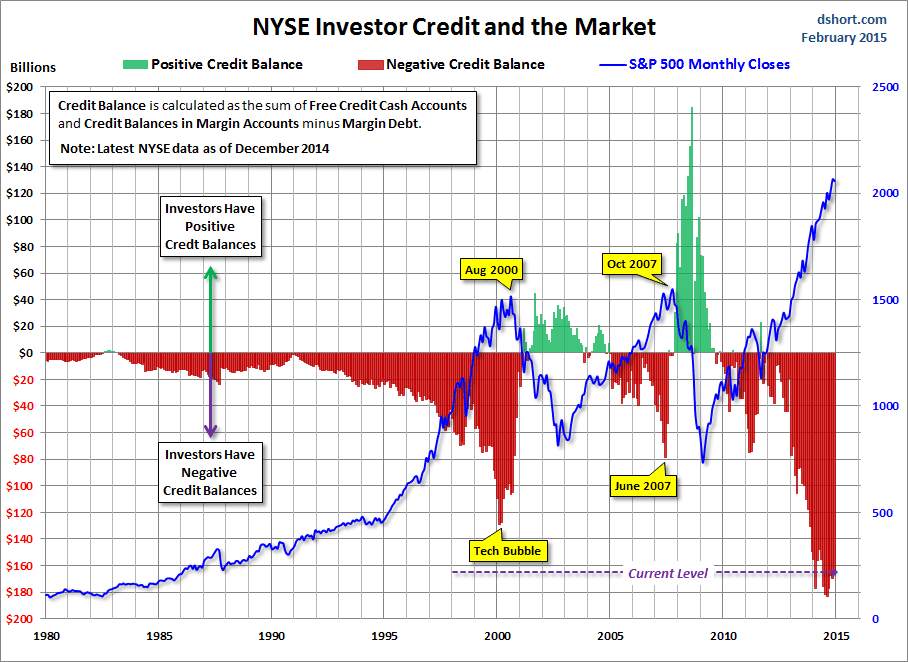A few weeks ago I took a look at the margin debt numbers using them to argue that overall demand for stocks could have already peaked. There are plenty of other indicators confirming what this one seems to be saying but this is just one slice of the demand picture. There’s an entirely unrelated demand factor that may be even more troublesome for the stock market.
Before we get to that, however, let’s take a look at the latest margin debt figures. From the chart below, it looks as if investors may have, indeed, run out of buying power. Total margin debt/negative credit balances peaked from all-time record levels just about a year ago and have essentially flatlined since.

Chart via Doug Short
Taking a look at Rydex funds, the ratio between bullish and bearish funds is now greater than it was at the peak of the internet bubble, mainly because almost nobody sees the need for downside protection anymore (see assets in bear funds and the bottom of the chart). Even total capitulation by those invested in bearish funds would not move the needle much in terms of demand for stocks.

Â
This is also confirmed by the total amount of money invested in equity funds in relation to money market funds. Like the Rydex indicator, the bullishness expressed here has never been higher. Of course, more money could flow from money market funds into equities but, considering how this indicator is already historically stretched, it doesn’t seem likely.

Chart via Doug Short
What may be the most fascinating and underreported aspect of the demand picture, however, is the incremental demand the equity market has seen from sovereign wealth funds over the past few years. Considering these hold roughly $7 trillion in assets today, they are no small factor in the discussion.
The two largest funds in Japan and Norway now have equity allocations over 50%. This is already a fairly aggressive allocation these days for large pension-type plans so it’s not likely they will significantly increase this exposure. We certainly won’t see Japan go from a 0% allocation to equities to 50% again as we have recently.

